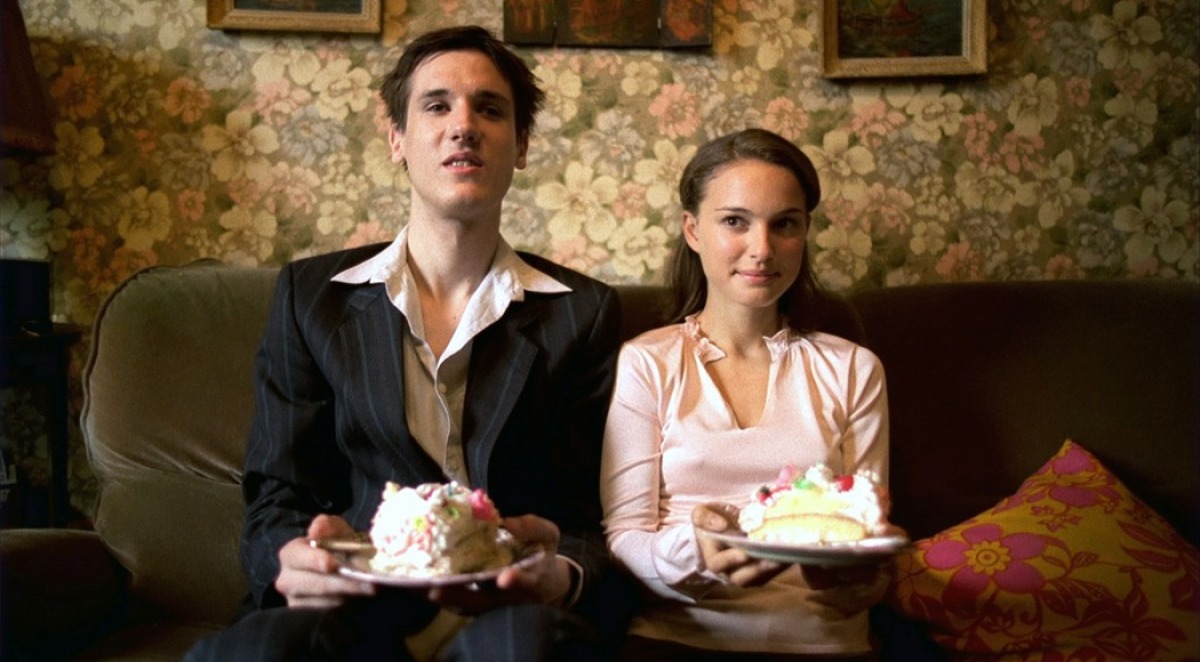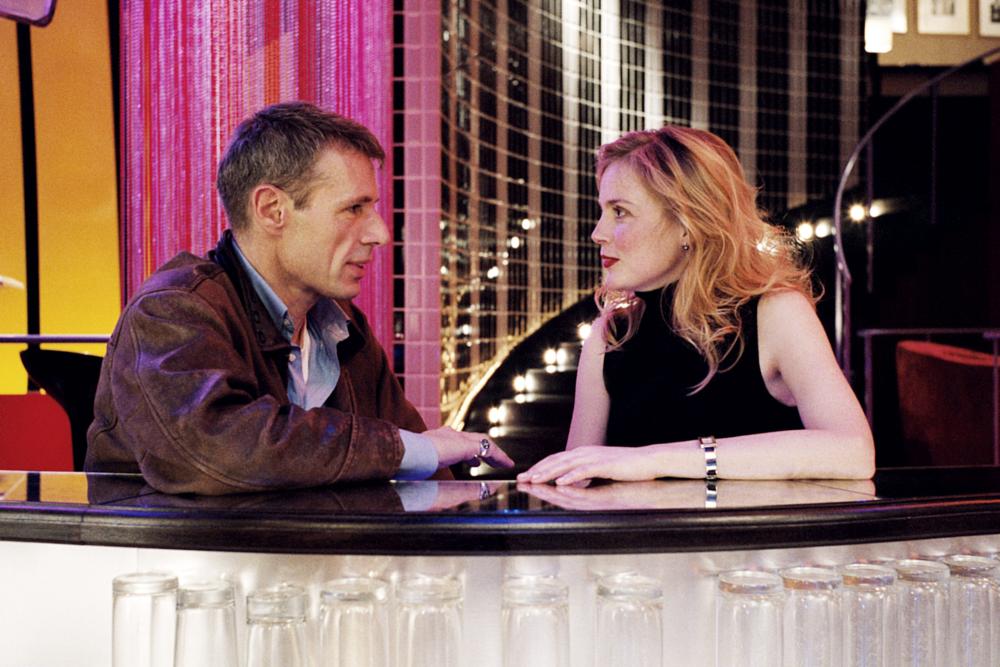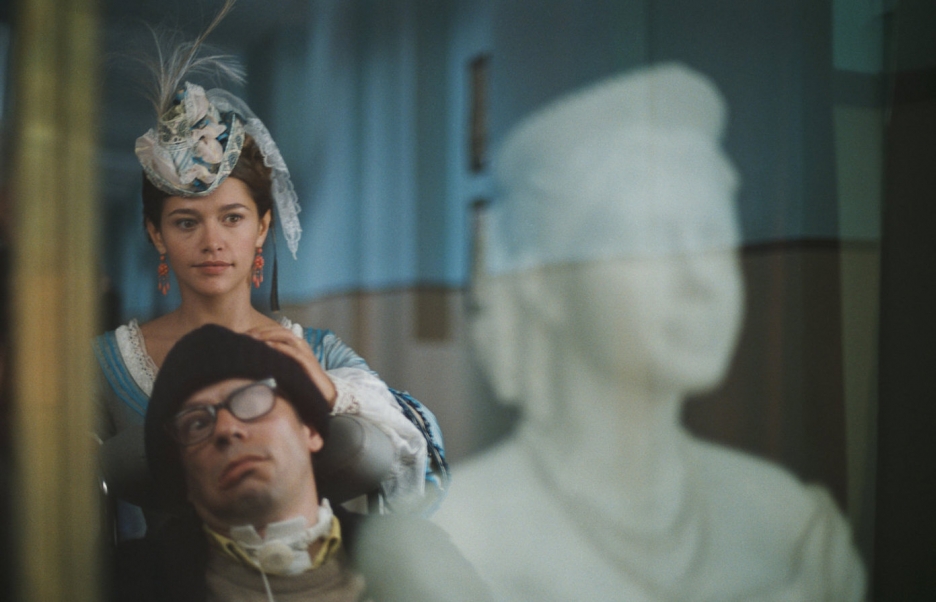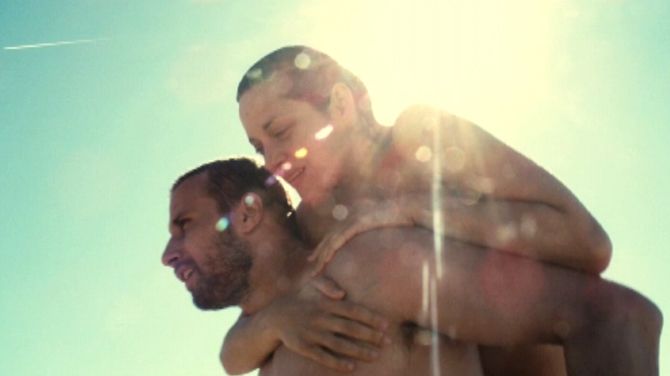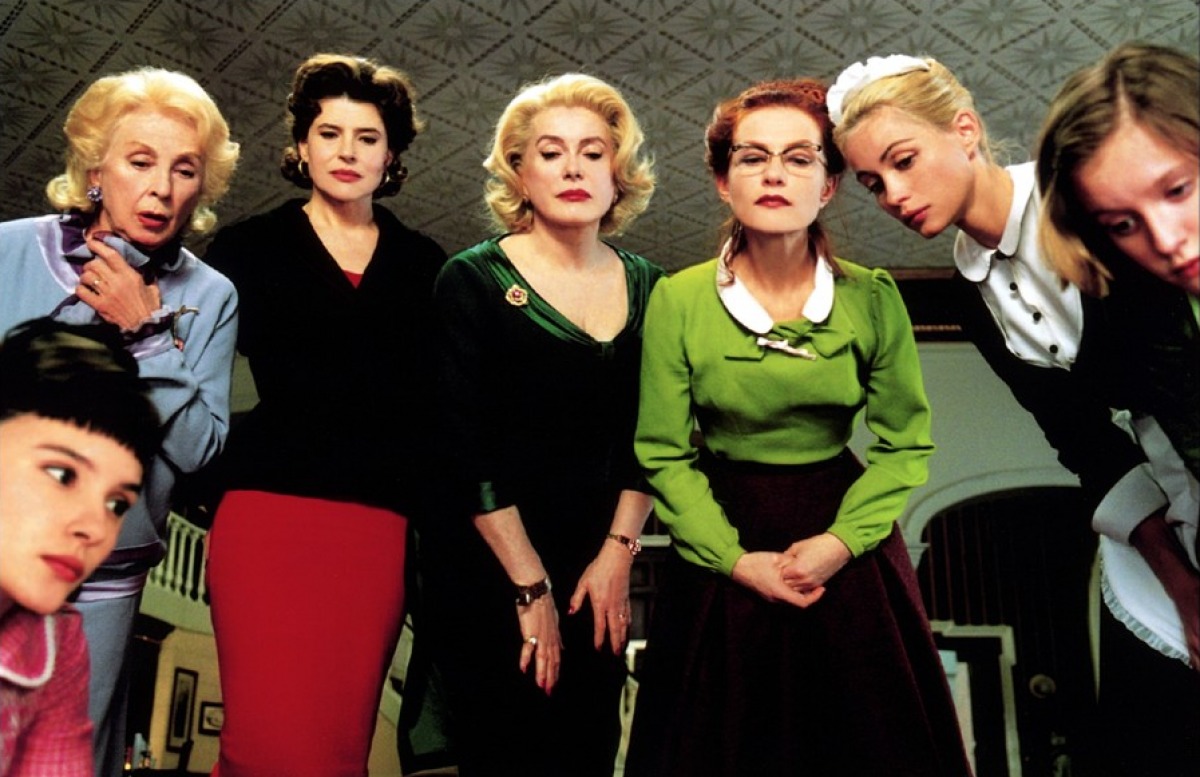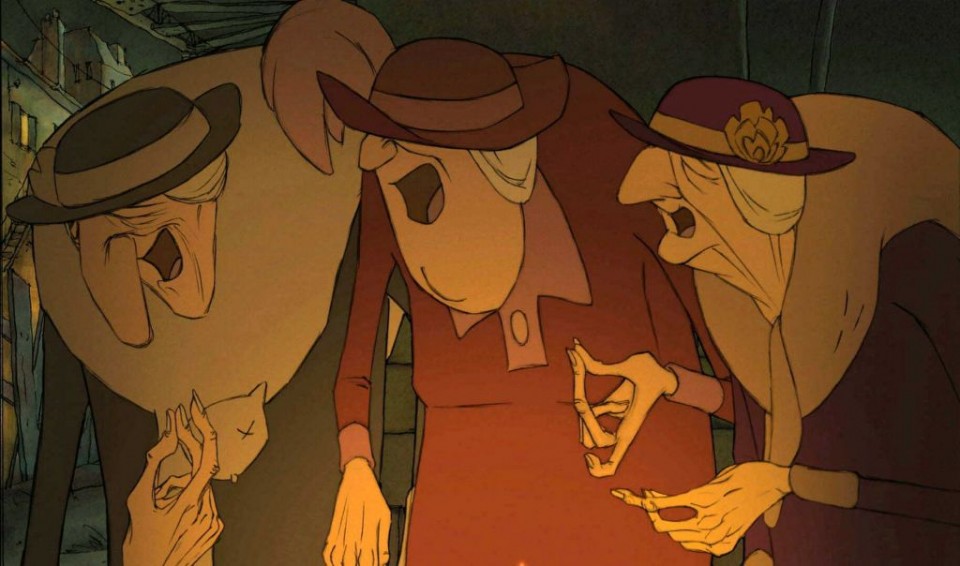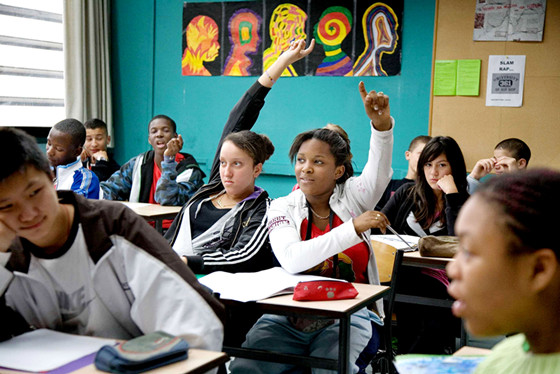14. Paris, je t’aime (2006)
Paris, je t’aime is not a purely-French film, but it is an enigmatic summary of the world’s view of modern French cinema. The film is the result of 22 directors’ work: the best modern directors of French and international cinema came together to produce 18 shorts. It doesn’t take much effort to guess the topic of these shorts: love, in Paris. The execution, however, is what makes this sketch film truly memorable.
A frequent fault of this type of film is that each director contributes an outstanding and great piece, but the shorts fail to come together and form a bigger picture. In the case of Paris, je t’aime there is no such mistake; the episodes follow each other to form a dramatic arc spanning from a beginning (of life and/or love) to the end (divorce, death).
The eternal, ubiquitous love for this charming city, Paris, as expressed by the American woman in her broken French in the last episode (Alexander Payne’s short), completes the picture.
The 18 segments each represent one district of the city; therefore the film not only covers all walks of life, but also forms a map of Paris, showing its sunny boulevards and the little dark alleys alike.
Among the contributors are Sylvain Chomet (see his film The Triplets of Belleville on this list), Ethan and Joel Cohen, Alfonso Cuarón, Gérard Depardieu, Alexander Payne, Tom Tykwer, Gus Van Sant, Richard LaGravenese and Wes Craven as directors and Juliette Binoche, Willem Dafoe, Maggie Gyllenhaal, Fanny Ardant, Bob Hoskins, Elijah Wood and Natalie Portman as actors.
13. Private Fears in Public Places (Alain Resnais, 2006)
Resnais was a director who continuously attempted to cross the boundaries between film and other arts, as the film Private Fears in Public Places represents. This movie is based on Alan Ayckbourn’s play and follows the lives of six solitary characters in Paris. Although the film is set in contemporary Paris, the mise-en-scene has a confusingly jumbled sense of space and time.
The title sequence gives the impression of a ‘70s film, which is further enhanced by the visual details, full of pastel colours and props. However, we clearly see the glowing apple logo on Charlotte’s MacBook, leaving the viewer in absolute confusion.
As the film progresses, the increasingly theatrical elements of the mise-en-scene come to rescue the viewer from confusion. The walls that end without reaching a ceiling, snow that falls in the room of an apartment and the sudden, inexplicable change in lighting all give the impression that the camera is pointed at some sort of stage production, where time is irrelevant and only the personal drama matters.
Resnais’ drama shows that even meeting the right person at the right time can’t save people from living lonely lives and committing the same mistakes over and over again. Sabine Azéma gives a remarkable performance as Charlotte, a religious lady who has some dirty secrets. She is accompanied by André Dussollier as the ribald Tierry and Pierre Arditi as the noble Lionel.
The younger generation is represented by the gorgeous Isabelle Carré in the role of Gaëlle, Laura Morante playing the disrespected Nicole, and Lambert Wilson as Dan the tippler.
12. The Diving Bell and the Butterfly (Julian Schnabel, 2007)
The true story of Elle editor Jean-Dominique Bauby, who was left with locked-in syndrome after a stroke, is heart-rending, but Julian Schnabel’s picture takes a step forward, turning his bio into a sad confession of an eternally-lonely individual. The film brilliantly begins with the camera being forced into the cage of Jean-Do’s (Mathieu Amalric) body, the POV shot positioning the viewer next to the locked-in consciousness of the main character.
From here on, the shaky camera movements create a strong claustrophobic atmosphere. This is gradually resolved as, over time, Jean-Do discovers his own way of escaping from the diving bell of his body. As he embarks on fantasy trips back in time and into an alternative reality of the hospital, the documentary-style cinematography is replaced by the baroque images of imagination.
Since it’s only his left eye that is not paralysed, Jean-Do has to find a new way to communicate with the outside world. With the help of two beautiful women, Henriette (Marie-Josée Croze), the speech therapist and Calude (Anne Cosigny), a secretary who records his words, Jean-Do gradually gains back his will to live and express his thoughts.
Accompanying the loneliness of the main character, beauty is always present in the figure of women who, before the tragedy, would have been easily accessible for the editor but are now beyond his reach as erotic subjects.
With its exceptional photography, The Diving Bell and the Butterfly is not only homage to an admirable person who found a way to be heard from within the prison of his own body, but also an homage to cinema. As Jean-Do’s imagination lets the camera break free from the forced POV shot, the audience can witness how the first trembling steps of the hand-held camera develop into a beautiful, coherent and lyrical language of images.
11. Rust and Bone (Jacques Audiard, 2012)
Jacques Audiard has an unerring instinct for creating unique genre films with a focus on the personal development of his characters. Like other Audiard movies such as The Beat that My Heart Skipped and A Prophet, Rust and Bone features characters that have fallen to the periphery of the society.
Ali (Matthias Schoenaerts) is struggling to earn a living as a single dad after moving in with his sister in Antibes, while Stéphanie (Marion Cotillard), a killer whale trainer, loses her social connections to the world after a serious accident and the amputation of both her legs.
Both Ali and Stéphanie have their demons that they have to fight against or learn to live with, but Ali’s brutal honesty, especially on the subjects of sexuality and Stéphanie’s lame body, helps the woman to accept her changed circumstances and, ultimately, brings them closer.
They complement each other in a special way: Ali’s physical strength meets the fragile stamina of a woman with a broken body but a remarkably strong willpower. Although Marion Cotillard received far more award nominations for her performance, Matthias Schoenaerts equally deserves to be mentioned. His acting as the savage, intimidating Ali who gradually shows new layers of his personality is extraordinary.
The pair of them give an excellent performance, bringing to life two detached people who discover how much passion they are able to experience in life together.
10. 8 Women (Francois Ozon, 2002)
Ozon’s films are usually not gentle with the viewer, and 8 Women is no exception from this rule. The Brecht-esque theatricality of the film, combined with a good amount of black humour, makes it a difficult but rather entertaining watch.
The opening scene gives the impression that the film was shot within a painted set, and the way the director moves his actors is strikingly similar to the theatrical style of stage entrances and exits. Likewise, the story takes place at one single location, and the all-star cast comes together to participate in a convoluted Agatha Christie-like crime story, occasionally singing.
The eight divas on screen are Catherine Deneuve (Gaby), Isabelle Huppert (Augustine), Emanuelle Béart (Louise), Fanny Ardant (Pierrette), Danielle Darrieux (Mamy), Virginie Ledoyen (Suzon), Ludivine Sagnier (Catherine) and Firmine Richard (Madame Chanel), while the dead man is Dominique Lamure.
The story starts with the all-female family welcoming Suzon, who has just returned from school, but they soon notice the absence of the father, whom they then find lying dead in his room. Suzon suggests that the killer must be among them, so the investigation begins. To no surprise, everyone becomes more suspicious as the dirty little secrets of the characters unfold.
9. The Triplets of Belleville (Sylvain Chomet, 2003)
Sylvain Chomet’s first feature-length production is anything but an animation for children. Although the story begins with a scene that would pass for a heartwarming Pixar animation, it later becomes more bitter than sweet, leaving the audience a little bit uneasy about the topic of fulfilling one’s dreams.
Madame Souza gets introduced as a quirky old lady who would go to any length to make her subdued grandson happy. This is how Bruno, a rather homely puppy joins the family; however, it is only the gift of a bike that finally makes the lonesome child burst into happy laughter.
As time goes on, Bruno grows, not in beauty but in size, becoming a nervous, food-obsessed, kindly giant, while the boy, Champion, matures into a half-zombie whose only goal is to win the Tour de France.
The almost complete absence of human speech and the gloomy, distorted look of Chomet’s characters lend the film a melancholy tone and display of a high level of directorial professionalism.
As Madame Souza and Bruno set off in search for the kidnapped Champion, The Triplets of Belleville offers many moments of simple beauty, along with references to the vicious nature of human obsessions. With its sad undertone, which ponders that our dreams can be our doom, Sylvain Chomet’s first film is an animated masterpiece.
8. The Class (Laurent Cantet 2008)
The idealistic teacher’s struggle with a class of unwilling students has been put to film numerous times (To Sir, with Love, Dead Poets Society, Renaissance Man, School of Rock and Mona Lisa Smile to mention only a few). Consequently, avoiding stereotypes is not easy for directors who wish to revisit the topic. Laurent Cantet managed to meet the challenge.
His film, based on François Bégaudeau’s book, nicely avoids clichés when telling the story of the idealistic teacher and the socially and racially diverse class of kids. A main contributor to the film’s originality is the lead character since the book’s author, François Bégaudeau, plays the teacher.
Without doubt though, it is also Cantet’s virtuoso direction that prevents the film from feeling like a story retold for umpteenth time. Instead of opting for a stylized cinematic realism that might follow the students outside the classroom, he keeps the camera, students, teacher and, thus, the audience in the classroom – or between the walls, as the French title (Dans les murs) suggests.
As a result, the mise-en-scene references the style of talking head documentaries, well-supported by the kids’ performances, which are free of pretence. The film’s dramatic peak comes naturally when Souleymane (Franck Keïta) attends a disciplinary hearing.
Up until this moment, the viewer can hardly catch a glimpse of the students’ private life, which makes Souleymane’s tragic story even more prominent. A succession of accidents involving François and two of the girls leads to the boy being dismissed and sent back to Mali. Everyone is guilty to some degree, and this is the moment when the teacher and students finally become equal.
The authentic performance by François Bégaudeau and the kids’ brilliant moments of improvisation contribute to a crisp, original production that stands against the idea of transnationalism. The Class highlights that social and national inequality is not the issue of the past, but something that has to be discussed and addressed today.
